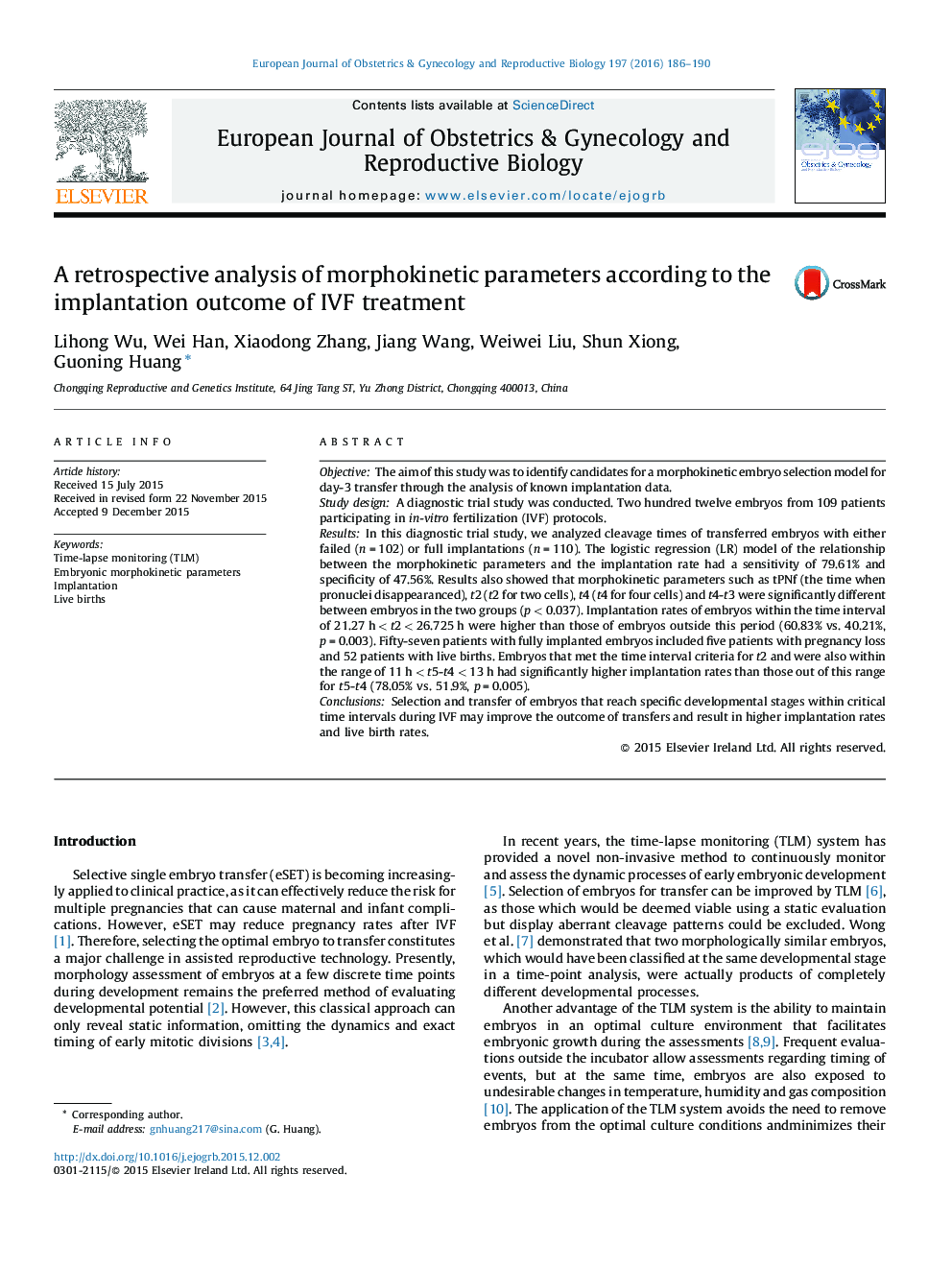| کد مقاله | کد نشریه | سال انتشار | مقاله انگلیسی | نسخه تمام متن |
|---|---|---|---|---|
| 3919460 | 1599784 | 2016 | 5 صفحه PDF | دانلود رایگان |

ObjectiveThe aim of this study was to identify candidates for a morphokinetic embryo selection model for day-3 transfer through the analysis of known implantation data.Study designA diagnostic trial study was conducted. Two hundred twelve embryos from 109 patients participating in in-vitro fertilization (IVF) protocols.ResultsIn this diagnostic trial study, we analyzed cleavage times of transferred embryos with either failed (n = 102) or full implantations (n = 110). The logistic regression (LR) model of the relationship between the morphokinetic parameters and the implantation rate had a sensitivity of 79.61% and specificity of 47.56%. Results also showed that morphokinetic parameters such as tPNf (the time when pronuclei disappearanced), t2 (t2 for two cells), t4 (t4 for four cells) and t4-t3 were significantly different between embryos in the two groups (p < 0.037). Implantation rates of embryos within the time interval of 21.27 h < t2 < 26.725 h were higher than those of embryos outside this period (60.83% vs. 40.21%, p = 0.003). Fifty-seven patients with fully implanted embryos included five patients with pregnancy loss and 52 patients with live births. Embryos that met the time interval criteria for t2 and were also within the range of 11 h < t5-t4 < 13 h had significantly higher implantation rates than those out of this range for t5-t4 (78.05% vs. 51.9%, p = 0.005).ConclusionsSelection and transfer of embryos that reach specific developmental stages within critical time intervals during IVF may improve the outcome of transfers and result in higher implantation rates and live birth rates.
Journal: European Journal of Obstetrics & Gynecology and Reproductive Biology - Volume 197, February 2016, Pages 186–190